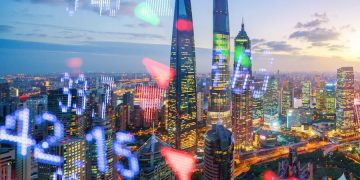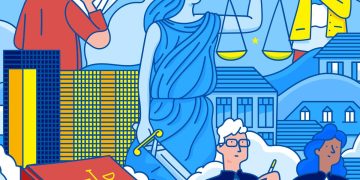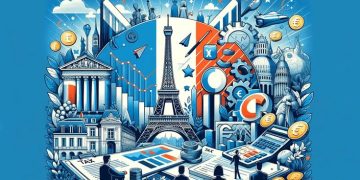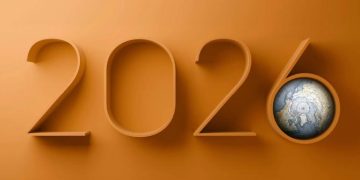Treasury bond futures refers to the transaction of Treasury bond derivatives through the pre-determined purchase and sale price on the China Financial Futures Exchange and the delivery of Treasury bonds and funds in a specific time in the future. Treasury bond futures, like stock index futures, are financial derivatives transactions.
The reason for the creation of Treasury bond futures is that there were two oil crises in the United States in the 1970s, which led to the overall fluctuation of inflation in the United States and the fluctuation of interest rates was relatively large. Investors who hold US Treasury bonds for a long time have a strong investment demand for bond position management, so the Chicago Board of Trade began to plan to issue Treasury bonds futures. In January 1976, the Chicago Mercantile Exchange launched the 90-day Treasury bill futures contract, which was the first Treasury bond futures contract in the history of the United States, marking the official establishment of the Treasury bond futures market.
Domestically, the first pilot trading of Treasury bond futures began on the Shanghai Stock Exchange in 1992, and the simulation trading pilot was restarted in 2012. On September 6, 2013, the five-year Treasury bond futures contract TF1312 was officially listed and traded on the China Financial Futures Exchange, marking the official establishment of the domestic Treasury bond futures market.

Part.1
The development history of domestic and overseas Treasury bond futures
The earliest Treasury bond futures in the overseas market is the American market, which was originally set up to smooth the fluctuations of assets holding the position of Treasury bonds, reduce interest rate risk, and maintain the stability of the financial system. In the 1970s, with the dissolution of the Bretton Woods system, the end of the gold standard era and the impact of the energy crisis, the United States fell into economic stagflation. In order to promote the repair of the US economy, the US government liberalized the control of interest rates, resulting in increasing fluctuations in market interest rates. Wide fluctuations in interest rates made it difficult for investors holding long-term fixed interest rate bonds in the market, thus increasing the market’s demand for avoiding interest rate risks. Then came Treasury bond futures, an interest rate risk management tool. In January 1976, the Chicago Mercantile Exchange introduced short-term interest rate futures varieties of 90-day Treasury bill futures. In May 1982, the Chicago Exchange continued to introduce 10-year Treasury bond futures, long-term Treasury bond futures and other varieties. With the increase in the scale of US Treasury bonds, the overall turnover of the Treasury bond futures market has also increased, and the average daily turnover of US Treasury bond futures by the end of 2022 is about 120 billion US dollars. On the basis of the US Treasury bond futures system, other countries have also begun to develop their own national Treasury bond futures. At present, the global Treasury bond futures have formed a relatively complete futures contract system with different maturities.
In the domestic market, the government bond futures restarted the simulation trading pilot in 2012, and the five-year government bond futures contract was officially listed on the China Financial Futures Exchange on September 6, 2013. This was followed by the launch of the 10-year Treasury futures contract in 2015, the two-year Treasury futures contract in 2018, and the 30-year Treasury futures contract on April 21 this year. From the current domestic bond futures market, our country has formed a relatively perfect bond futures contract system covering long, medium and short term. At present, the average daily turnover of China’s national debt futures market is about 400 billion yuan.
Part.2
The role of Treasury bond futures
- Reduce the risk of interest rate fluctuations
As a derivative of cash bonds, the price trend of bond futures is highly positively correlated with the price trend of cash bonds. Institutional investors such as commercial banks and insurance companies can hedge their cash bond positions by using the bond futures, thus effectively avoiding the potential risks caused by sharp fluctuations in interest rates.
- Offer price discovery
As a kind of futures derivatives, national debt futures itself has the price discovery function of futures varieties. Through the national debt futures market, the expectation of interest rate trend can be reflected in a timely manner, helping to realize the construction of bond yield curve under the macro-policy regulation.
- Help bond issuance
As an interest rate risk management tool, Treasury bond futures can provide risk management during the transaction for underwriters, investors and other participants in the primary market of Treasury bonds, improve the willingness of participants to participate, and thus help the better issuance of national bonds.
- Implement asset allocation
As a kind of bond derivatives, Treasury bond futures have a high degree of positive correlation with cash bonds, and can be used as another investment way to allocate bond assets. In addition, because the national debt futures itself has a certain leverage and the transaction fee is relatively low, more flexible investment strategy management can be achieved.
Part.3
The investor structure of Treasury bond futures
At present, investors in the national debt futures market can be divided into individual investors and institutional investors, of which institutional investors account for 91% of the position, 75% of the turnover, is the main group participating in the national debt futures market.

- Individual investors
Because investment in the Treasury bond futures market requires a certain degree of professionalism and understanding of macro policies, individual investors rarely participate in Treasury bond futures. In addition, the authority access of national debt futures also has high requirements on the asset level and trading experience of individual investors. Individual investors must ensure that the available fund balance of the account is not less than 500,000 yuan for 5 consecutive trading days before applying for an account opening. At the same time, they must have a total of 10 trading days, more than 20 financial futures simulation trading records or more than 10 futures trading records in the last three years, and they must also test the basic knowledge of financial futures. The high threshold also makes participation by individual investors relatively limited.
- Institutional investors
At present, the institutional investors of national debt futures include commercial banks, insurance asset management, public funds, private funds, securities asset management and so on. With the further liberalization of access to the national debt futures market, the composition of institutional investors in national debt futures began to change, from the original commercial banks and fund companies to gradually diversify. As an important institutional investor in the medium and long term allocation of national debt, insurance institutions are also entering the national debt futures market in batches, and insurance capital is becoming a new increment in the national debt futures market. Through the Treasury bond futures market, insurance companies can more effectively manage the interest rate risk of holding cash bonds, optimize the portfolio of insurance companies in the bond sector, and improve the willingness of insurance companies to further participate in the Treasury bond market. In addition, the participation of private funds has also been increasing, further enhancing the degree of institutionalization of the Treasury bond futures market. In addition, private funds have also begun to use interest rate derivatives such as national debt futures to allocate bond assets, and with the advantage of low transaction cost and good liquidity of national debt futures, they have built more abundant bond portfolio strategies and bond and other major asset portfolio strategies.
Part.4
Brief summary
With the gradual release of access to the national debt futures market, more investors will participate in the national debt futures market, which will provide more incremental funds for the national debt futures market and enhance the liquidity of the national debt market. It is believed that with the gradual expansion of the scale of cash bonds and the further improvement of the depth of market trading, Treasury bond futures will usher in more new opportunities for development.








































